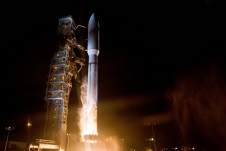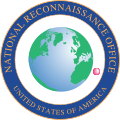 | |
| Mission type | Radar imaging |
|---|---|
| Operator | US NRO |
| COSPAR ID | 2013-072A |
| SATCAT no. | 39462 |
| Spacecraft properties | |
| Spacecraft type | Topaz |
| Manufacturer | Boeing |
| Start of mission | |
| Launch date | 6 December 2013, 07:14:30 UTC |
| Rocket | Atlas V 501 AV-042 |
| Launch site | Vandenberg SLC-3E |
| Contractor | ULA |
| Orbital parameters | |
| Reference system | Geocentric |
| Regime | Low Earth (retrograde) |
| Perigee altitude | 1,108 kilometers (688 mi) [1] |
| Apogee altitude | 1,113 kilometers (692 mi) [1] |
| Inclination | 123.01 degrees [1] |
| Period | 107.35 minutes [1] |
| Epoch | 22 January 2015, 18:27:48 UTC [1] |
 | |
USA-247, also known as NRO Launch 39 or NROL-39, is an American reconnaissance satellite, operated by the National Reconnaissance Office and launched in December 2013. The USA-247 launch received a relatively high level of press coverage due to the mission's choice of logo, which depicts an octopus sitting astride the globe with the motto "Nothing Is Beyond Our Reach". [2] The logo was extensively criticized in light of the surveillance disclosures in July 2013. [3]
